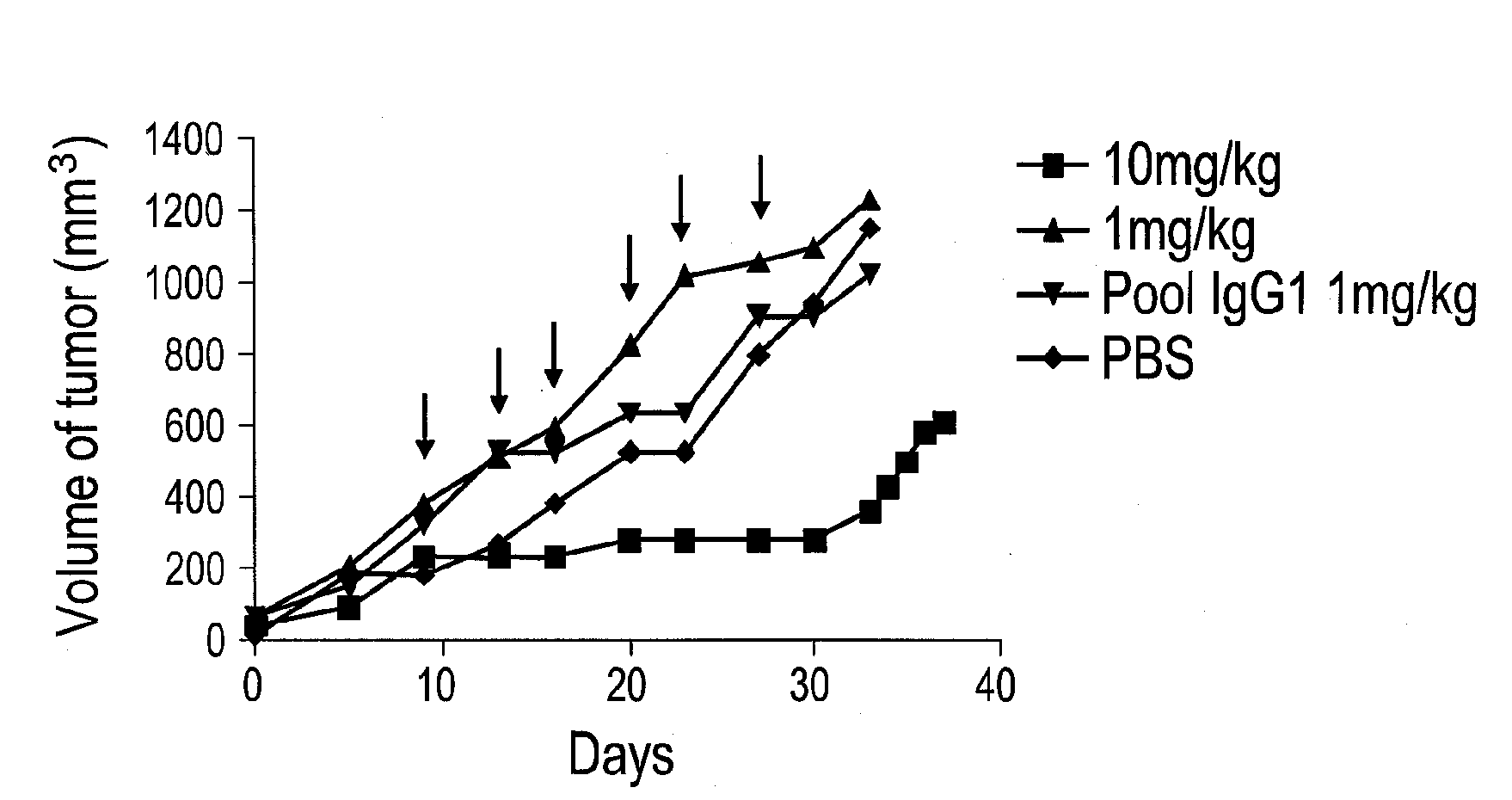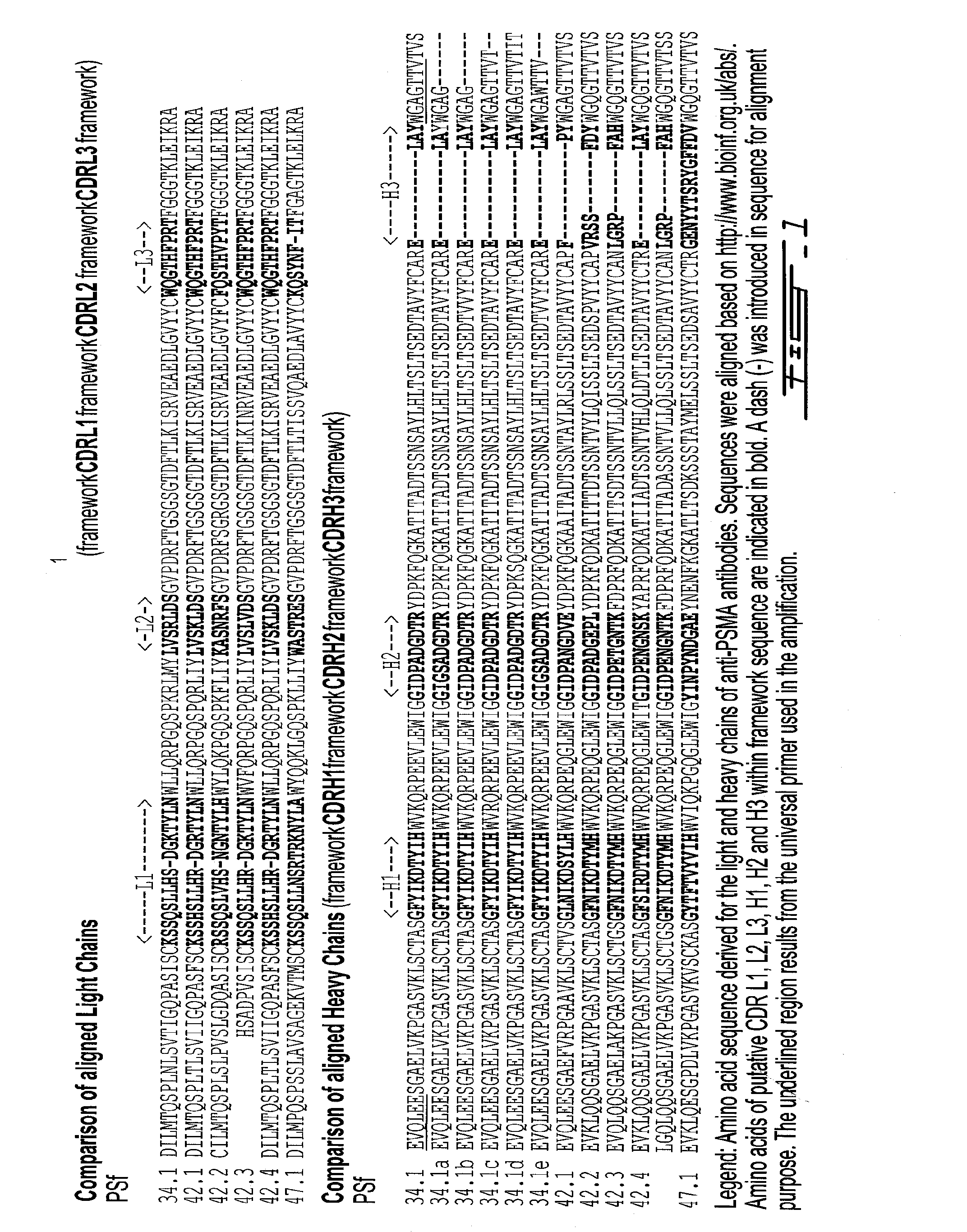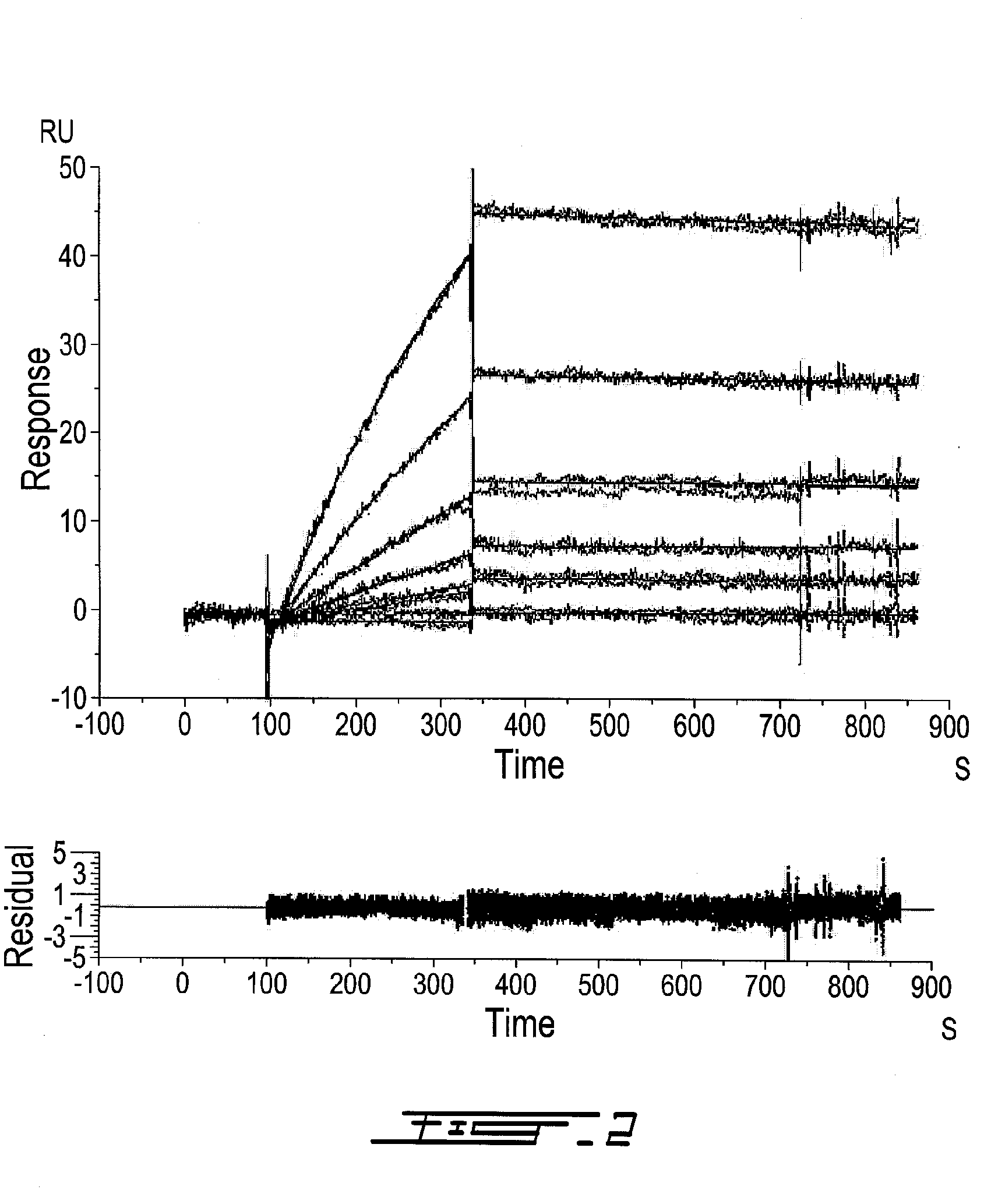Prostate specific membrane antigen antibodies and antigen binding fragments
a membrane antigen and prostate specific technology, applied in the field of prostate specific membrane antigen antibodies and antigen binding fragments, antigen binding fragments thereof, can solve the problem of limiting its usefulness as an imaging agent for the detection of prostate cancer, and achieve the effect of promoting cell death and reducing the growth of cancer cells
- Summary
- Abstract
- Description
- Claims
- Application Information
AI Technical Summary
Benefits of technology
Problems solved by technology
Method used
Image
Examples
example 1
PSMA Antibodies Preparation
Materials and Methods
[0534]Monoclonal antibodies against an extracellular epitope of PSMA were generated as described in international application No. PCT / CA2004 / 000127 filed in Jan. 28, 2004 in the name of Cuello et al. More particularly, PS0215 (SEQ ID NO.: 56) was synthesized by FMOC synthesis with >85% purity and included a cysteine residue at the amino terminus for conjugation to the sulfhydryl-reactive carrier protein keyhole limpet hemocyanin (KLH) or bovine serum albumin (BSA) using N-maleimide chemistry. The conjugated peptide was used to immunize animals. Hybridomas secreting monoclonal antibodies against the peptide were characterized and the reactivity and specificity of the monoclonal antibodies towards PSMA-expressing cells or towards PS0215 was confirmed. Recombinant PSMA, peptide and membranes of PSMA-expressing cells were also obtained in accordance with methods known in the art or as described in PCT / CA2004 / 000127.
[0535]Solid-phase ELISA:...
example 2
PSMA Antibodies Structure
[0537]Isotyping was determined using Isostrips (Roche Diagnostics Corp., Indianapolis Ind.) and was confirmed to be either IgG1 k or IgG3 k.
[0538]The nucleic acid and the amino acid sequence of the antigen binding fragment was determined. Total RNA from ten millions hybridoma cells was extracted using Trizol (Invitrogen) according to the manufacturer's recommendations. The resulting RNA was reverse-transcribed into cDNA with ThermoScript RT and oligo(dT) primers according to the manufactrer's protocol (Invitrogen). DNA corresponding to the IgG heavy or light chain was then amplified by PCR using the oligonucleotides pair 5′-TGAGGTGCAGCTGGAGGAGTC-3′ (SEQ ID NO: 57) and 5′-GTGACCGTGGTCCCTGCGCCCCAG-3′ (SEQ ID NO:58) or 5′-GACATTCTGATGACCCAGTCT-3′ (SEQ ID NO:59) and 5′-TTTTATTTCCAGCTTGGTCCC-3′ (SEQ ID NO:60) respectively. The resulting PCR product was cloned into plasmid pCR2.1 TOPO (Invitrogen). The insert DNA from selected recombinants was sequenced and an Ig ...
example 3
PSMA Antibodies Characterization
[0539]Antibody binding assay: Saturation binding studies were performed on whole cells with purified anti-PSMA MAb followed by detection of cellbound MAb using 125I-labeled goat anti-mouse IgG. Briefly, nearly confluent LNCaP cells were rinsed with ice-cold PBS and scraped in PBS containing the protease inhibitor cocktail described above. Cells (7.5×106 per tube) were incubated with 100 μL of antibody diluted in complete RPMI to various concentrations for 1 h at room temperature. After washing, 100,000 dpm of 125I-labeled goat anti-mouse IgG at a specific activity of 872 dpm / pmol was added to cells for 1 h at room temperature. Following removal of unbound secondary antibody by centrifugation, the radioactivity associated with the cell pellet was determined using a gamma counter. Non-specific binding was determined in the presence of a 100-fold molar excess of the antibody antigen PSMA490-500. The average non-specific binding of all antibodies reached ...
PUM
| Property | Measurement | Unit |
|---|---|---|
| pH | aaaaa | aaaaa |
| volume | aaaaa | aaaaa |
| volume | aaaaa | aaaaa |
Abstract
Description
Claims
Application Information
 Login to View More
Login to View More - R&D
- Intellectual Property
- Life Sciences
- Materials
- Tech Scout
- Unparalleled Data Quality
- Higher Quality Content
- 60% Fewer Hallucinations
Browse by: Latest US Patents, China's latest patents, Technical Efficacy Thesaurus, Application Domain, Technology Topic, Popular Technical Reports.
© 2025 PatSnap. All rights reserved.Legal|Privacy policy|Modern Slavery Act Transparency Statement|Sitemap|About US| Contact US: help@patsnap.com



